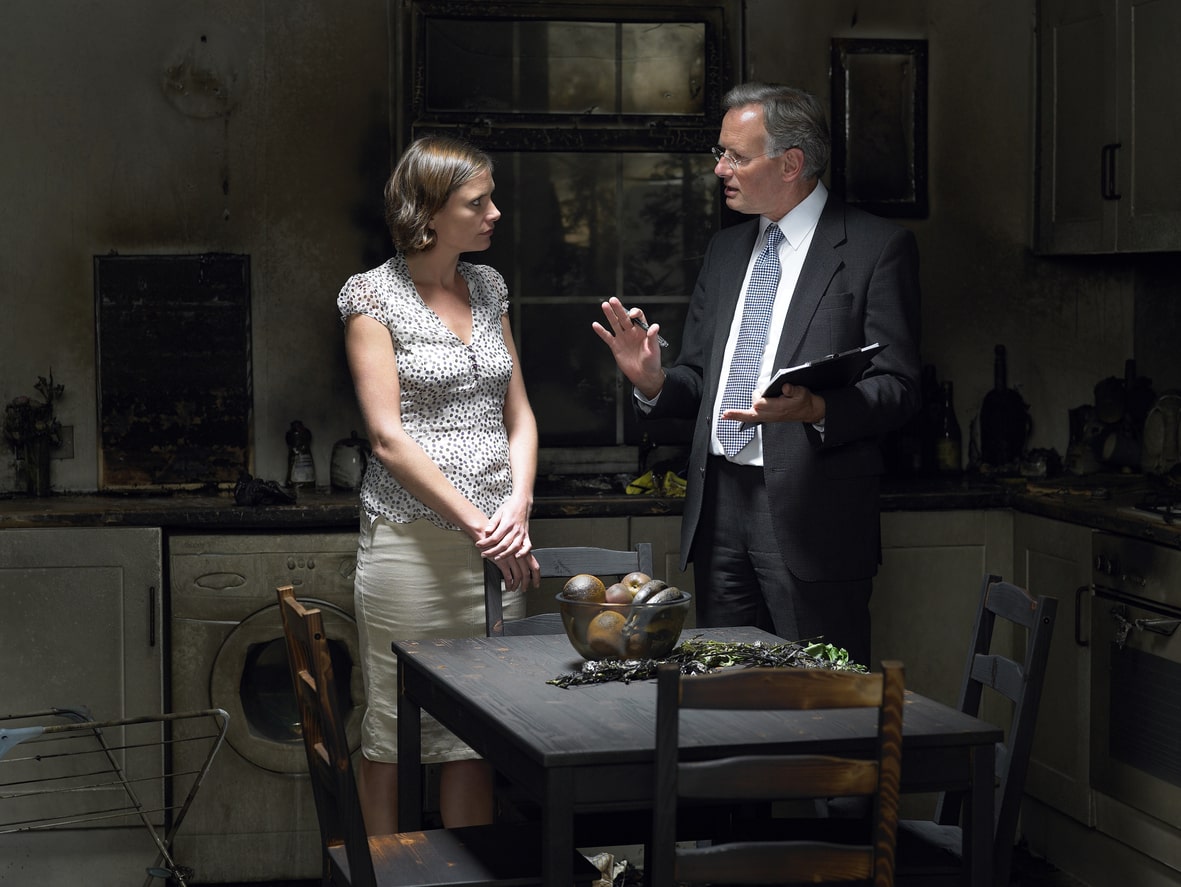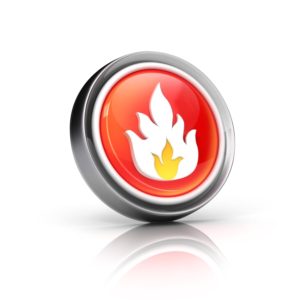
Home Fire Insurance – Almost nothing can strike fear in a homeowner’s heart more than the thought of a fire, and statistics confirm that the apprehension has a factual basis. An astonishing number of fires occur each year in American homes, and the National Fire Protection Agency (NFPA) predicts that most homeowners can expect to experience one about once every five years. Accidental house fires occur from all causes, and more than 70 percent of them result from cooking and home heating. Residential fires from all causes produced significant damage that amounted to approximately $13 billion in property losses in 2018. Click here for the Best-Selling Fire Safety Products.
Preparing to Prevent Loss

You may expect your homeowners’ insurance to cover repairs or replacement costs if a fire damages your home and its contents. Most policies provide coverage of your dwelling, detached structures and personal property.
You can enjoy peace of mind when you know that your coverage meet the level of loss that a fire can cause. A review of the terms of your policy that you can do ahead of time helps prepare you for preventing loss and making necessary adjustments.
Comparing Major Causes
Of the estimated 379,000 residential building fires in 2018, more than half resulted from cooking. U.S. fire statistics from the Federal Emergency Management Agency (FEMA) show that heating, unintentional or careless acts and electrical malfunction contributed an additional number of fires that added a little less than 10 percent each to the total. Less than 5 percent originated from an open flame in the home, intentional setting, appliances, improper functioning equipment and smoking. While cooking accounts for the most fires, the amount of dollar loss that it produces ranks near the bottom. Although electrical malfunction accounts for only 6.8 percent of the total occurrences of home fires, the loss of $1,200,100,000 in a single year outranks other causes dramatically. Homes lead other types of properties in fire deaths, injuries and dollar loss.
Considering Types of Fire Damage
Depending on the extent of a home fire, the damage may affect the overall structure and roofing, or it may localize within the residence. Heat exposure to an electrical system can affect wire insulation, receptacles, AFCIs and GFCIs, switches and circuit breakers. Damage to a mechanical system can affect heating and air conditioning systems, motors, pumps and appliances. In a residential plumbing system, PVC supply and drain lines can break or leak, creating the potential for water damage if not replaced. Remediation for mold may require efforts to control contamination in walls, ceilings or areas below the flooring. Recovery from smoke damage and odors that remain require removing materials and cleaning after removal.
Understanding Fire Coverage
Home insurance policies typically cover fire damage up to set limits, and they provide coverage for major categories. A key distinction in types of coverage lies in the difference between actual cash value or replacement costs that a policy pays. If your policy provides coverage for actual cash value, your payment includes the cost to replace your property with the same kind and equal quality minus depreciation. Replacement cost payments offer funds to pay for a new property to replace the damaged structures and possessions. The difference consists of the deduction for depreciation. Even though the statistics that FEMA reports show that some people deliberately set fire to their own homes, no policy can cover an act of arson
• Dwelling coverage includes damage to your home’s physical structure and other structures. It covers built-in contents such as appliances, permanent heating and cooling systems and electrical wiring. In deciding on an insured value for your home, base your estimates on the cost of reconstruction. Other structure coverage includes your garage or shed and any fixture that attaches to the ground such as driveways and sidewalks, fences, patios, pools and walls.
• Personal property coverage applies to clothes and furniture as well as valuables that may have set limits for high-value items.
• Liability coverage protects you against lawsuits or damage claims in case a fire on your property spreads to your neighbors.
• Loss of use helps pay for some living expenses for you to live elsewhere during the repair period. Most policies offer coverage options to pay for additional living expenses to help lighten the burden of lodging and meals while you cannot occupy your home.
Rightsizing Your Homeowner and Fire Insurance Coverage
With knowledge of statistics on fire occurrence and the coverage that you have in case of fire, you may decide to increase the amount. You can arrive at a dollar figure that has a factual basis. While it may require some effort to prepare it, you can enjoy peace of mind from having a realistic estimate of the fire protection that you need. Your research can help you set the limits on your policy to provide the funds to rebuild your home, and it may differ from your mortgage amount.
Determining Structure Value
While your home has an understandably high emotional value, it does not count when you set the policy limits to replace it. If you do not already know the cost of construction in your area, a real estate agent or your county’s building department can tell you. To find the cost to rebuild your home, you can multiply your square footage by the price per square foot in the local market. Prices differ widely by area, and no standard rate or formula applies. The cost of the land does not matter when you calculate construction costs.
Factors that contribute to the price of rebuilding include the choice of frame, veneer, brick or stone, and wood construction offers the least expensive option for exterior covering. A style that builders can replicate easily can provide lower costs, and the price increases with the number of rooms. Roof design and materials offer a range of prices that start with composite shingles on a low slope to slate or shake shingles on a steep one. When you consider the chances of having to replace your roof, a realistic assessment provides a number that may help you later. In your review of your home’s features, remember the upgrades that you made, a fireplace, mantel or crown molding that may require additional expense to replace.
Assigning Value to Your Possessions
A home inventory provides the only reliable way to assess the value of your home’s contents. The laborious and time-consuming task of recording the details of each item may prevent you from doing it, but technology gives you an attractive alternative. You can find inventory software online to help you record the articles that may need replacing in case of fire. You may want to start in a small area of your home to avoid feeling overwhelmed by the size of the task, or you may find it easier to focus on the newest purchases at first. Remember to back up your digital files on an external drive for safekeeping. As you review your possessions, you may find that some have a higher value than you thought.
Estimating Living Expenses Away from Home
A feature of your homeowners’ insurance policy gives you the option of Additional Living Expenses (ALE) for hotel and restaurant charges that you incur away from your home. For an additional premium, you can have the peace of mind that contributes to your well-being during a stressful time. You may choose an unlimited amount of coverage, a set length of time of a fixed dollar amount depending on your policy.
Understanding the Covered Value of Your Home
When you wonder about increasing the coverage for fire in your homeowners’ policy, remember that most policies cover structural damage and the loss of contents for approximately 50 percent of the covered value of your home. In case you have a policy that gives you $300,000 worth of coverage, the amount that you may receive for the personal property portion amounts to half that or $150,000. Your actual compensation derives from the type of policy that you hold and your deductibles as well. Remember to include your choice of replacement value or depreciated value in your calculations. If you have high-value items that may not survive a fire in your home, you may want to consider a replacement value rider.
Arriving at Decision Time
The review of your policy and the potential costs of a loss to fire can provide benefits in your peace of mind and financial outcomes as well. When you have lived in your home for many years, you may not realize the accumulated value that it possesses. You can achieve the benefits by addressing potential risks and costs associated with them before you experience them.
A record of each item, the price you paid, the date you bought it and any serial numbers that came with it may seem tedious and boring now, but they become invaluable in case of fire. The investment of time and energy that you devote to preparing a home inventory with written documentation and photos can give you a record of possessions that you may not recall when a disaster strikes.
It prepares you to handle unexpected consequences in a way that helps resolve complex issues during stressful times. A decision to increase your fire insurance coverage can give you the peace of mind that you want and deserve. Click here for the Best-Selling Fire Safety Products.
Additional Resources:
https://en.wikipedia.org/wiki/Fire_safety
https://homesafetydot.com/article-sitemap-1-61cc84/
https://homesafetydot.com/article-sitemap-2-de7bff/
https://homesafetydot.com/article-sitemap-3-eb4e4a/
https://homesafetydot.com/article-sitemap-4-e75eb4/